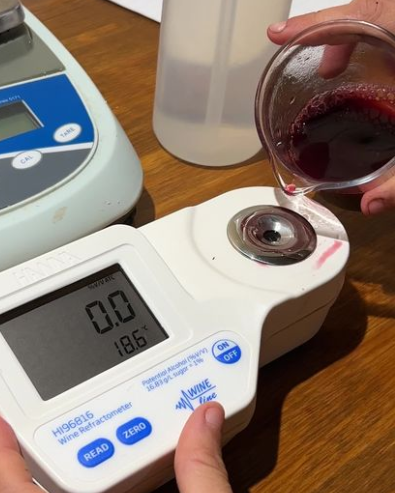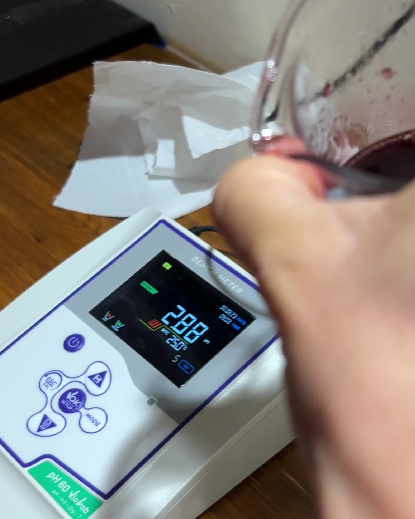After the color change of the grapes, veraison, the grapes begin to accumulate sugars. At the beginning of ripening, the acidity is very high and will decrease, unlike the sugar concentration. Depending on the wine you want to make, the balance point between the two will vary and the grapes will be harvested once this is reached.
We must be attentive when we go to the vineyard and taste the grapes to notice the appearance of said sugar accumulation, since it will indicate that we must begin weekly sampling of the vineyards to monitor ripening and harvest at the optimal time. Not all grape varieties have the same cycle or the same times. That is why it is very important to know the vineyard well and stay ahead of events.
The sampling method consists of randomly picking one hundred berries at different points of the bunch for each sample to be analyzed. We have different witnesses distributed in each vineyard. The witnesses are a representation of what happens in the entire vineyard and depending on the soil, the inclination of the terrain, the available water, etc. The vineyard will evolve more or less homogeneously and will need one or more controls to be representative.
Once we collect the samples, we analyze them in our laboratory. The parameters we analyze are: the weight of one hundred berries, sugar, pH and acidity. Why do we analyze these parameters?
The weight of the hundred berries tells us how the berry is fattening throughout its ripening, increasing its weight. At the moment when the weight is lower than the previous figure, we know that the berry is not going to gain more weight and that the grape begins to dehydrate or, in other words, become raisined. This means that, as weight decreases, production decreases and that the accumulation of sugar is not due to the fact that sugar continues to be produced, but rather, when dehydrated, the sugar becomes concentrated. We seek to pick the grapes before they begin to become raisin-free.
The sugar indicates the probable alcoholic strength, the yeasts are responsible for transforming the sugar and will transform it into alcohol. Depending on the type of wine you want to make, it can vary from 10 to 15 degrees of alcohol.
pH is a variable that tells us how stable our wine is and its longevity.
Acidity has a close relationship with pH, the higher the acidity, the lower the pH. Therefore, acidity is also related to the stability of the wine. Obtaining good acidity is very important because it provides freshness. Musts with low acidity can produce very flat wines.


Once we approach the ripening points that we have established for the wine we want to make, we will carry out sampling every three days, since the grape can evolve very quickly in a week, running the risk of losing a lot of acidity and obtaining a higher alcohol level. very high.
By doing this monitoring along with a berry tasting in the vineyard, we can decide the day of the harvest.